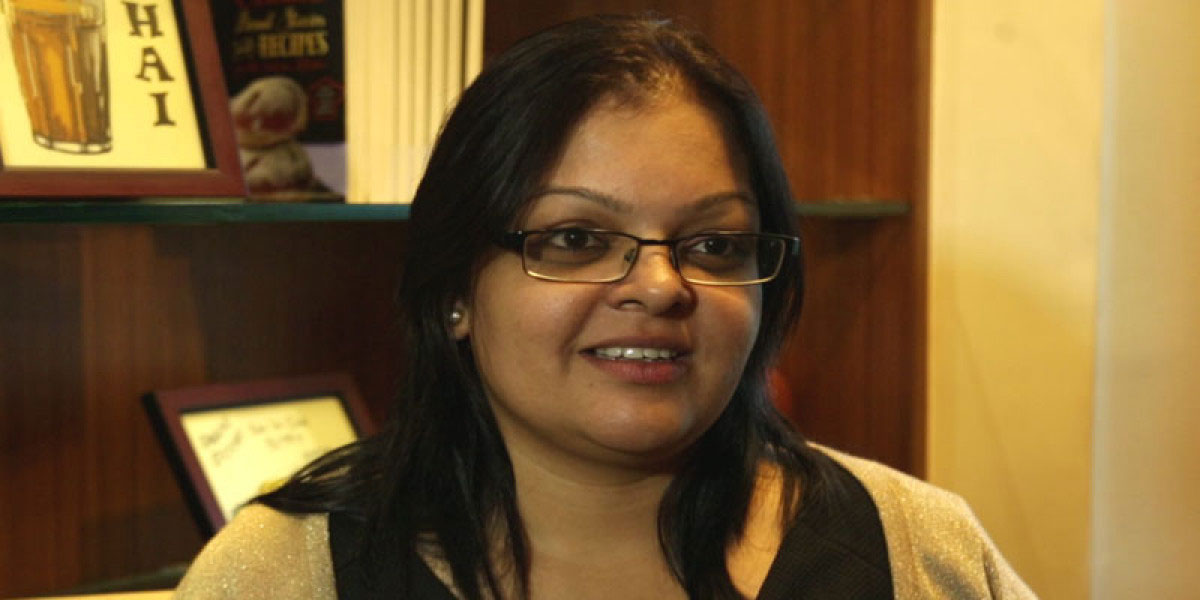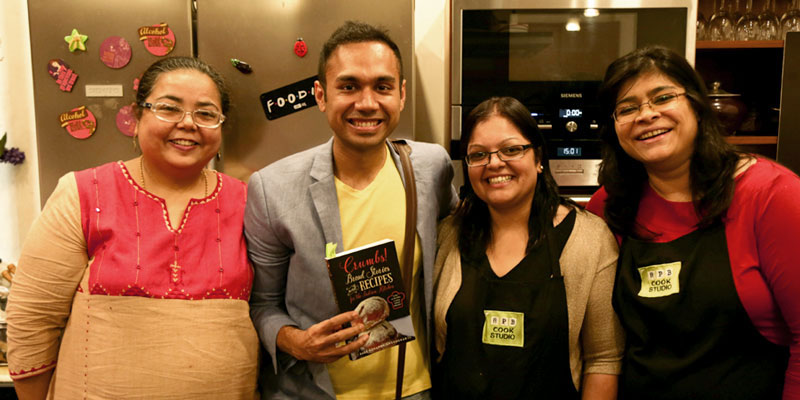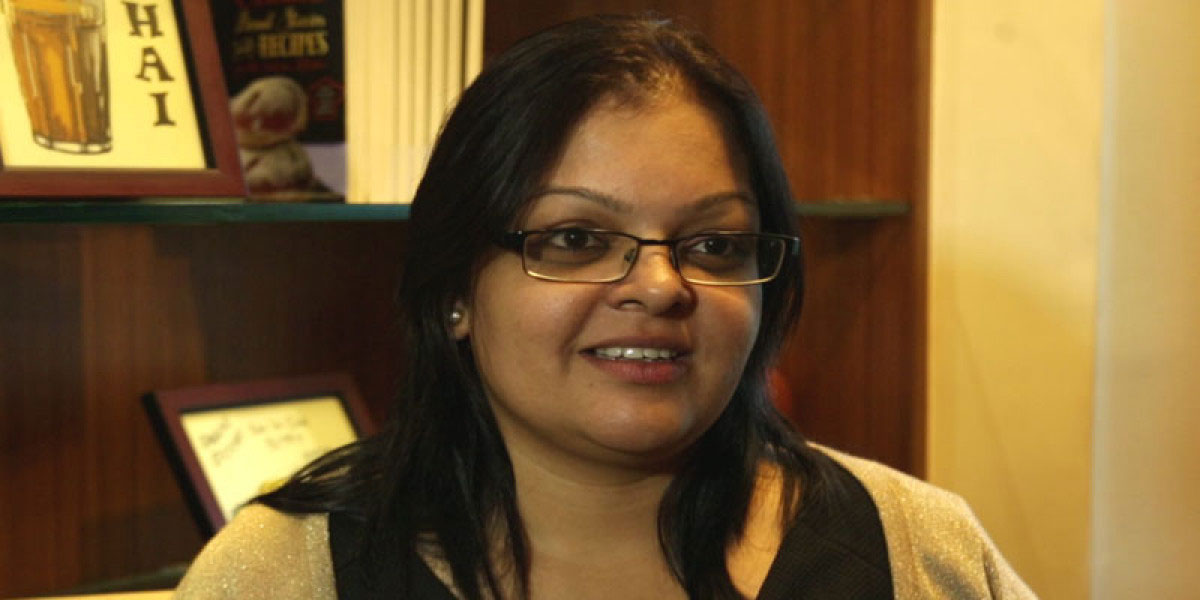Crumbs!: Bringing bread into Indian Kitchens and more
Food consultant and writer Saee Khandekar talks to Vikhroli Cucina about her brand new book on baking, Crumbs!, made especially with the yeast phobic in mind. In this candid interview, Saee lets us know why the cookbook, which combines storytelling with cooking, may be the best thing since sliced bread

What inspired you to write a book around the topic of bread, which is usually just an accompaniment to main courses?
Bread has often been equated with life itself. In literature even, bread has been used as a metaphor for food in general—that is how crucial it is to our existence. There are several books on bread in the western world but none about leavened bread in the Indian context. All the bread books in India talk about roti, paratha, and naan but not about poee and pita. In the bread-making classes I taught, I realised that there was a growing interest in domestic bread making but there wasn't a book we could turn to. Books from abroad would ask for strong hit bread flour but all we get here is maida. That is where Crumbs! was born.
Name some of your favourite books on food.
Memories with Food at Gipsy House by Roald and Felicity Dahl, The Victorian Kitchen by BBC, Tartine Bread by Chad Robertson and Cooked by Michael Pollan.
Your blog reflects your efforts towards reviving traditional food and techniques. How much of that has inspired this book? Are there any traditional techniques in baking that you’ve shared in the book? Please elaborate.
The basic premise of Crumbs! is to make all manner of breads (Indian and international) using ingredients that are indigenous and devoid of chemical additives or preservatives. In that sense, it is in keeping with my philosophy of eating local. In terms of technique, I fall back on traditional Indian culinary wisdom in the way I explain things to a novice baker. For instance, I explain the basic principle of making sourdough breads using the analogy of idli batter. The international recipes also have Indian variations in terms of flavourings.

It’s tough, but if you had to choose, what is your favourite recipe in the cookbook?
Possibly the Multigrain Bread. It's a simple recipe, looks beautifully rustic, is fully natural (no added vital gluten) and appeals to all ages.
You've been conducting classes for a very long time—what’s most vital for the success of a home cook?
Experimentation and learning from your local market. The more you visit the local markets and see what ingredients are available on the shelves, and the more your experiment with them, the more exciting, varied and nutritious your table will be.
What did you find to be the most challenging thing about writing this book?
Standardising recipes is always a challenge given the fact that the failure or success of bread depends on so many factors ranging from climate, weather, oven type, flour strength, kneading technique, water quality, etc. Writing recipes that explains the roles played by these factors without making them sound like a list of disclaimers was tough!
You've given a lowdown on the behaviour of yeast, guidance on techniques, recipes, stories about the history of bread and some of the oldest, most popular bakeries across the country. Which bit did you enjoy researching/writing the most?
I loved interacting with the bakers and understanding their baking philosophy. Although they spoke different languages, the near uneducated poee maker in a bhatti in Goa made bread with the same dedication as the artisan sourdough bread maker in metropolitan Mumbai. Their workspaces were vastly different from each other in terms of sophistication and working conditions, but their ingredients were the same--flour, water, salt, yeast. I found that realisation very humbling.
Your take on some food related buzzwords — organic, seasonal and superfoods
I don't know about organic; I believe in natural food that is not messed up by human hand (or mind!). Seasonal is a concept that we grew up with partly because we had no choice. We only ate mangoes in the summer. We only ate raspberries if we went to Mahabaleshwar in the winter. So in that sense, seasonal was thrust upon us, but it did us good. Not only did we make the most of the seasonal produce that was at its nutritional peak, but we also learned to appreciate the coming and going of the seasons and we learned to not be greedy.
Baking bread at home is not a new phenomenon in the West. Why do you feel bread baking is not hot in India, considering not a single day goes by when we don’t dabble with flour?
That's exactly what I am trying to say with Crumbs! An average Indian starts his or her day with making dough or eating roti for breakfast. In a sense, the understanding of flours and dough consistency is in our DNA. The only thing that scares us is yeast. Through the book, I try to make yeast accessible--where to buy it, how to store it, what kind works best, etc. I hope that dispels some of the myths associated with yeast and brings leavened bread more confidently into the Indian kitchen.
Could you share some tips for the novice baker?
Buy the best quality yeast and store it correctly. Test it before use. On average, the dough for a straight bread recipe (not sourdough) should have the consistency of a chapatti dough (soft and silky) but not as tough as a puri dough. Start with making maida breads because they yield more encouraging results. As you get the hang of the craft, you will be able to make changes with great results. And lastly, experiment!
What according to you makes a good book?
Personal experience, or at least some sort of socio-political context. There's lot of reading matter online, lots of recipes and lots of theory. But unless you place it in a personal context and make it your story, why would anyone invest in the book?
What’s next in the pipeline?
Loads of things related to my work as a food consultant and some interesting writing projects as well, this time a subject even closer to home.

